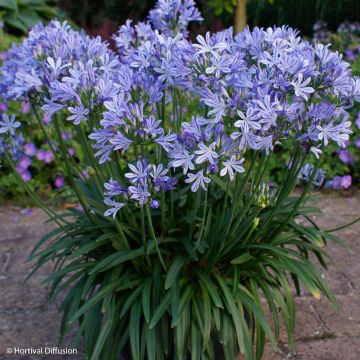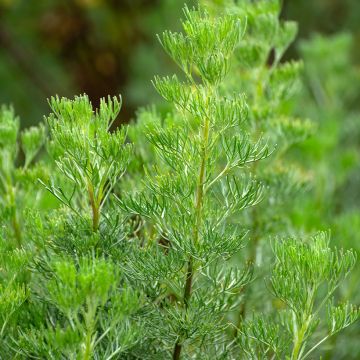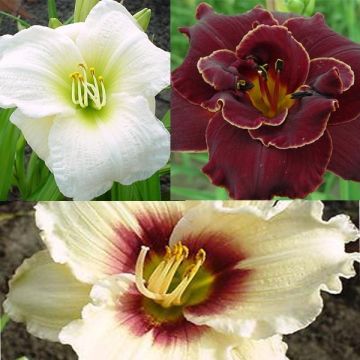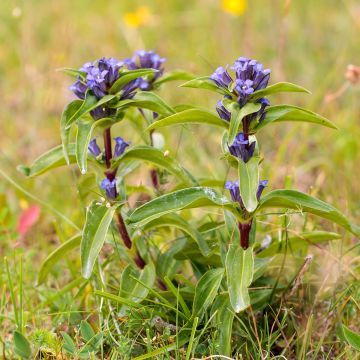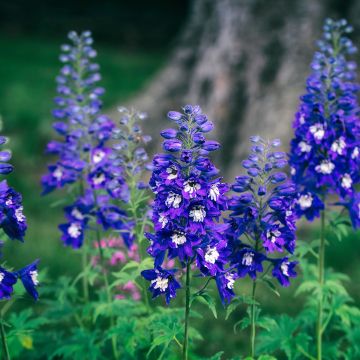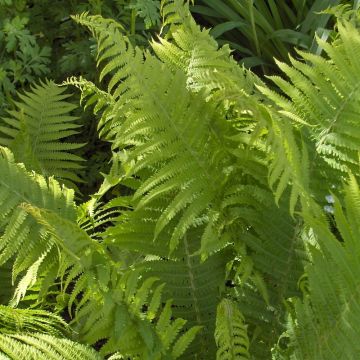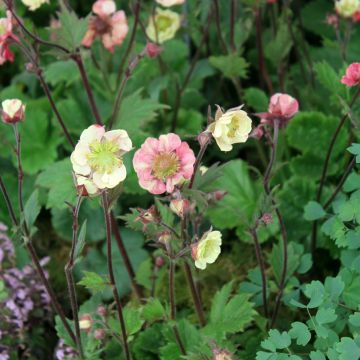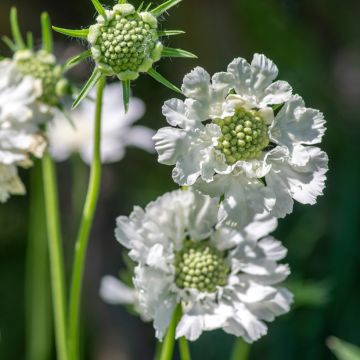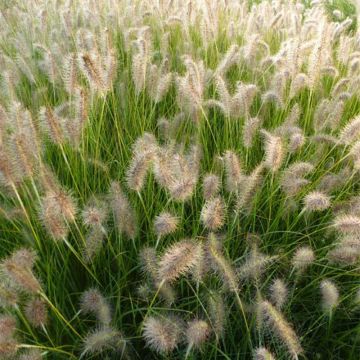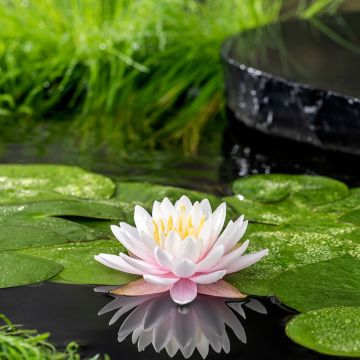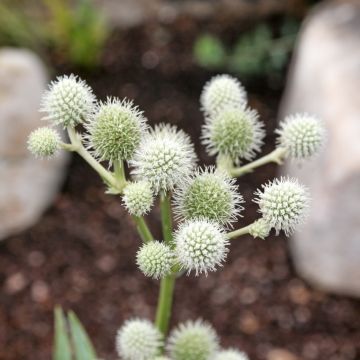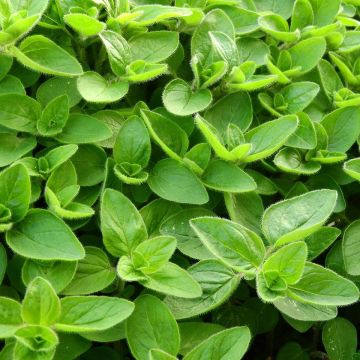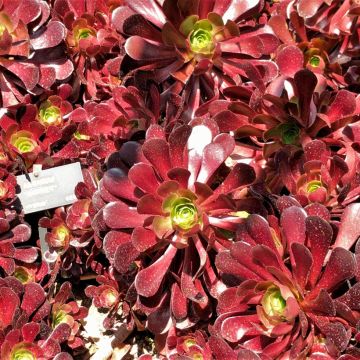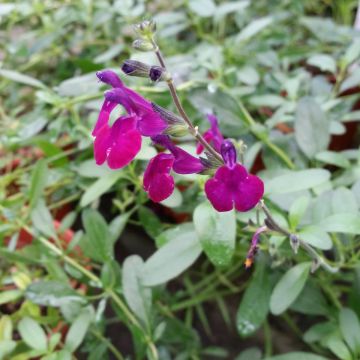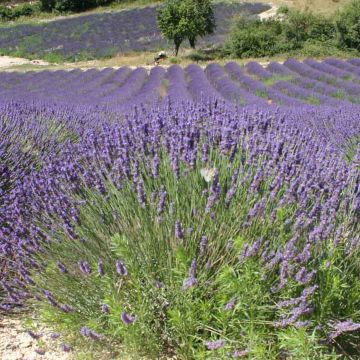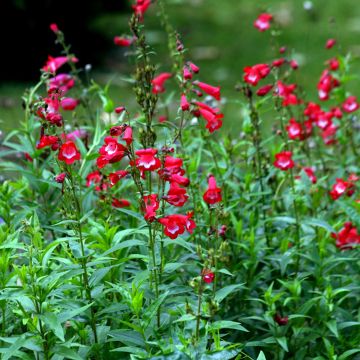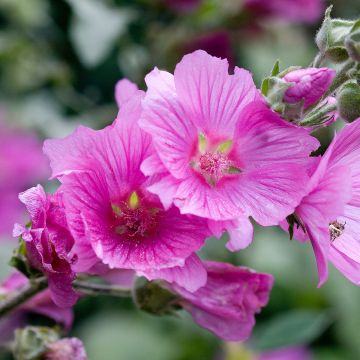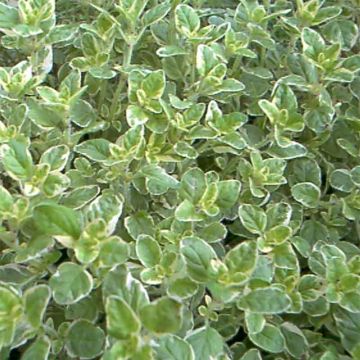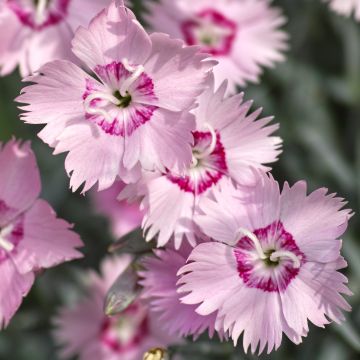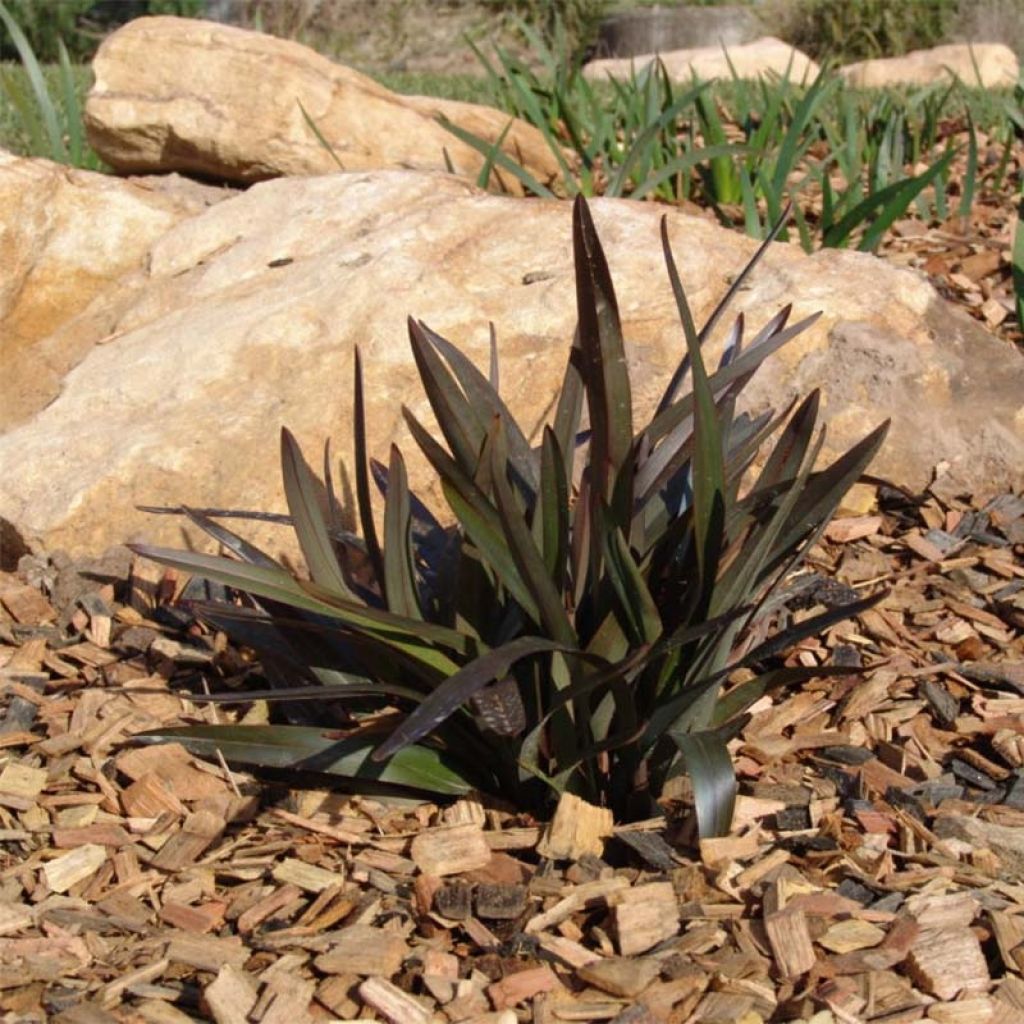

Dianella tasmanica Blaze
Dianella tasmanica Blaze
Dianella tasmanica Blaze
Flax Lily
This item cannot be shipped to the selected country
Delivery charge from €5.90
More information
Schedule delivery date,
and select date in basket
This plant carries a 12 months recovery warranty
More information
We guarantee the quality of our plants for a full growing cycle, and will replace at our expense any plant that fails to recover under normal climatic and planting conditions.
From €5.90 for pickup delivery and €6.90 for home delivery
Express home delivery from €8.90.

Does this plant fit my garden?
Set up your Plantfit profile →
Description
Dianella tasmanica 'Blaze' is a sculptural perennial from Oceania, with evergreen leaves forming a flexible chocolate brown clump for most of the year. In early summer, it produces graceful spikes of small blue flowers with yellow hearts. Not very hardy, it is best suited for very mild climates, such as coastal areas, in a contemporary-inspired garden. It requires acidic and well-drained soil, in full sun or partial shade, and can withstand periods of drought.
Dianella tasmanica is a species native to the southeast coast of Australia and the island of Tasmania. It can be found in clearings and open woodlands, on soft, moist, and acidic, often sandy, soils. Dianellas have often been moved to various botanical families as scientific research progresses. Currently, it is considered to be part of the Asphodelaceae family, along with phormiums, aloes, steppe lilies (Eremurus), and asphodels. The plant forms a clump of flexible and arched leaves, which sets it apart from other species like Dianella revoluta, which has upright leaves. In late spring, between May and July, the plant produces very graceful, branched spikes with numerous small blue-purple flowers with golden stamens - although the 'Blaze' variety does not seem to flower extensively. In favourable climates, the flowers are followed by small round, bright violet fruits, extremely decorative and long-lasting. The clumps slowly but steadily spread through short rhizomes that increase in diameter over the years.
The 'Blaze' variety is characterized by its magnificent, eye-catching foliage of warm chocolate tones, with reddish tips, for a good part of the year. The plant may be slightly greener in summer. It reaches about 45 cm (18in) high and 50 cm (20in) wide.
Due to its origins, the Dianella 'Blaze' is not very hardy: it can tolerate light frost, but strongly suffers below -5°C and will probably disappear below -7°C. Provide it with a suitable location, sheltered from cold winds, in a region that does not experience severe frost. This species likes acidic (lime is harmful to it), moist to wet soils, not too poor. It enjoys full sun or partial shade, and can even be planted in full shade in regions with very hot summers (like its native Australia). However, good soil drainage is essential to prevent the rotting of the dense and shallow-rooted crow. Once well established, the crowns withstand summer drought and heat well, and are easy to grow.
Due to its striking Australian design, the Dianella 'Blaze' will make an impression if planted in multiple specimens in a contemporary flowerbed, for example, alongside its cousins the phormiums - consider 'Golden Ray' or 'Rainbow Maiden', with complementary hues, and other lighter Dianella varieties like 'Coolvista'. It is also interesting as a standalone specimen, or in a large pot, on a terrace with light-coloured tiles.
Report an error about the product description
Dianella tasmanica Blaze in pictures
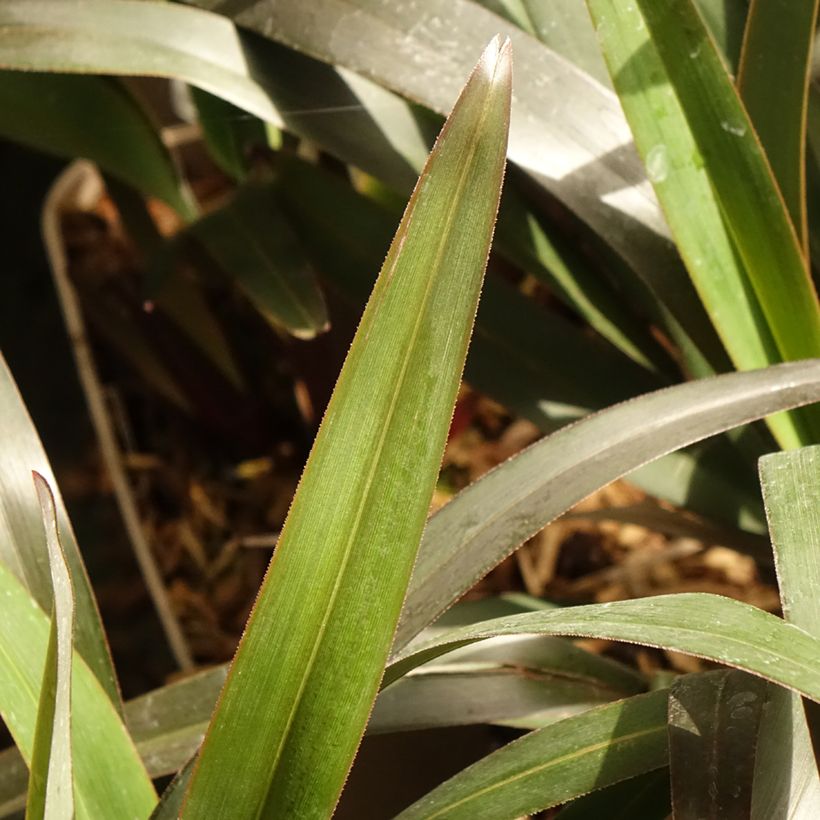

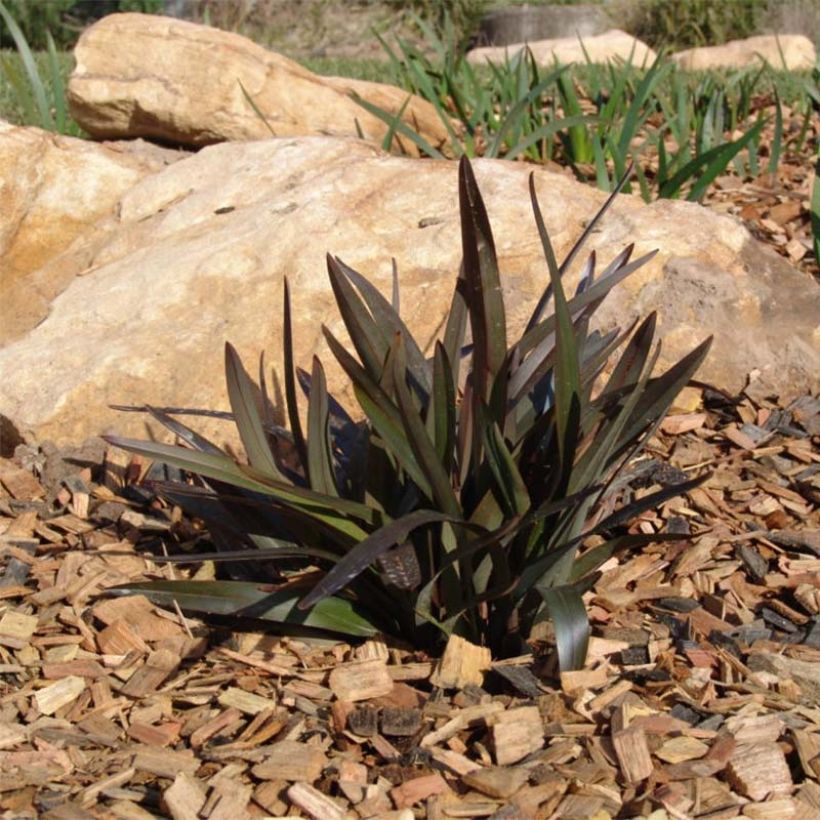

Flowering
Foliage
Plant habit
Botanical data
Dianella
tasmanica
Blaze
Asphodelaceae
Flax Lily
Cultivar or hybrid
Other Perennials A to Z
Planting and care
Plant Dianella tasmanica in acidic, light, well-drained soil, free of limestone. Once well established, it tolerates dry summers well and withstands short freezes of around -7°C in winter. If these conditions are met, it requires very little maintenance and lives for many years in the garden. Prune to 10 cm (4in) above the ground every 3 to 5 years to promote the appearance of young foliage that is lighter in colour. It is possible to cultivate it in pots using a non-limestone and well-draining substrate (a mix of ericaceous soil, compost, sand and garden soil). Water regularly, preferably with non-limestone water, and apply a balanced fertilizer.
Planting period
Intended location
Care
-
, onOrder confirmed
Reply from on Promesse de fleurs
Mediterranean perennials
Haven't found what you were looking for?
Hardiness is the lowest winter temperature a plant can endure without suffering serious damage or even dying. However, hardiness is affected by location (a sheltered area, such as a patio), protection (winter cover) and soil type (hardiness is improved by well-drained soil).

Photo Sharing Terms & Conditions
In order to encourage gardeners to interact and share their experiences, Promesse de fleurs offers various media enabling content to be uploaded onto its Site - in particular via the ‘Photo sharing’ module.
The User agrees to refrain from:
- Posting any content that is illegal, prejudicial, insulting, racist, inciteful to hatred, revisionist, contrary to public decency, that infringes on privacy or on the privacy rights of third parties, in particular the publicity rights of persons and goods, intellectual property rights, or the right to privacy.
- Submitting content on behalf of a third party;
- Impersonate the identity of a third party and/or publish any personal information about a third party;
In general, the User undertakes to refrain from any unethical behaviour.
All Content (in particular text, comments, files, images, photos, videos, creative works, etc.), which may be subject to property or intellectual property rights, image or other private rights, shall remain the property of the User, subject to the limited rights granted by the terms of the licence granted by Promesse de fleurs as stated below. Users are at liberty to publish or not to publish such Content on the Site, notably via the ‘Photo Sharing’ facility, and accept that this Content shall be made public and freely accessible, notably on the Internet.
Users further acknowledge, undertake to have ,and guarantee that they hold all necessary rights and permissions to publish such material on the Site, in particular with regard to the legislation in force pertaining to any privacy, property, intellectual property, image, or contractual rights, or rights of any other nature. By publishing such Content on the Site, Users acknowledge accepting full liability as publishers of the Content within the meaning of the law, and grant Promesse de fleurs, free of charge, an inclusive, worldwide licence for the said Content for the entire duration of its publication, including all reproduction, representation, up/downloading, displaying, performing, transmission, and storage rights.
Users also grant permission for their name to be linked to the Content and accept that this link may not always be made available.
By engaging in posting material, Users consent to their Content becoming automatically accessible on the Internet, in particular on other sites and/or blogs and/or web pages of the Promesse de fleurs site, including in particular social pages and the Promesse de fleurs catalogue.
Users may secure the removal of entrusted content free of charge by issuing a simple request via our contact form.
The flowering period indicated on our website applies to countries and regions located in USDA zone 8 (France, the United Kingdom, Ireland, the Netherlands, etc.)
It will vary according to where you live:
- In zones 9 to 10 (Italy, Spain, Greece, etc.), flowering will occur about 2 to 4 weeks earlier.
- In zones 6 to 7 (Germany, Poland, Slovenia, and lower mountainous regions), flowering will be delayed by 2 to 3 weeks.
- In zone 5 (Central Europe, Scandinavia), blooming will be delayed by 3 to 5 weeks.
In temperate climates, pruning of spring-flowering shrubs (forsythia, spireas, etc.) should be done just after flowering.
Pruning of summer-flowering shrubs (Indian Lilac, Perovskia, etc.) can be done in winter or spring.
In cold regions as well as with frost-sensitive plants, avoid pruning too early when severe frosts may still occur.
The planting period indicated on our website applies to countries and regions located in USDA zone 8 (France, United Kingdom, Ireland, Netherlands).
It will vary according to where you live:
- In Mediterranean zones (Marseille, Madrid, Milan, etc.), autumn and winter are the best planting periods.
- In continental zones (Strasbourg, Munich, Vienna, etc.), delay planting by 2 to 3 weeks in spring and bring it forward by 2 to 4 weeks in autumn.
- In mountainous regions (the Alps, Pyrenees, Carpathians, etc.), it is best to plant in late spring (May-June) or late summer (August-September).
The harvesting period indicated on our website applies to countries and regions in USDA zone 8 (France, England, Ireland, the Netherlands).
In colder areas (Scandinavia, Poland, Austria...) fruit and vegetable harvests are likely to be delayed by 3-4 weeks.
In warmer areas (Italy, Spain, Greece, etc.), harvesting will probably take place earlier, depending on weather conditions.
The sowing periods indicated on our website apply to countries and regions within USDA Zone 8 (France, UK, Ireland, Netherlands).
In colder areas (Scandinavia, Poland, Austria...), delay any outdoor sowing by 3-4 weeks, or sow under glass.
In warmer climes (Italy, Spain, Greece, etc.), bring outdoor sowing forward by a few weeks.

































